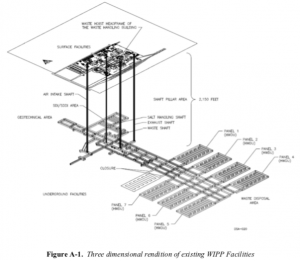
19 seconds – the amount of time airborne radiological contamination could be released before the safety dampers close. This assumes that all other components work perfectly.
A recent report from the Defense Nuclear Facilities Safety Board (DNFSB) explains the DNFSB’s calculations on the proposed new (estimated at nearly $300 million) safety significant confinement ventilation system (SSCVS).
The DNFSB is concerned that the final design of the Waste Isolation Pilot Plant (WIPP) ventilation system may not adequately perform its intended safety functions due to the use of potentially inadequate performance criteria for damper closure time and unspecified design requirements for the underground safety significant continuous air monitors (CAM) and related support systems.
As far back as March, 2018, the Board expressed concern “that the final design documentation for the WIPP SSCVS does not adequately address design requirements for the full integration of the underground safety significant continuous air monitoring system (CAM).”
The DNFSB concludes:
The lack of proper integration between the surface portions of SSCVS with the underground safety system increases the risk that the final system design will not meet all safety requirements. In addition to releasing unfiltered radiological contamination, a release could contaminate the salt reduction system and impact operations of the WIPP facility as a whole.
